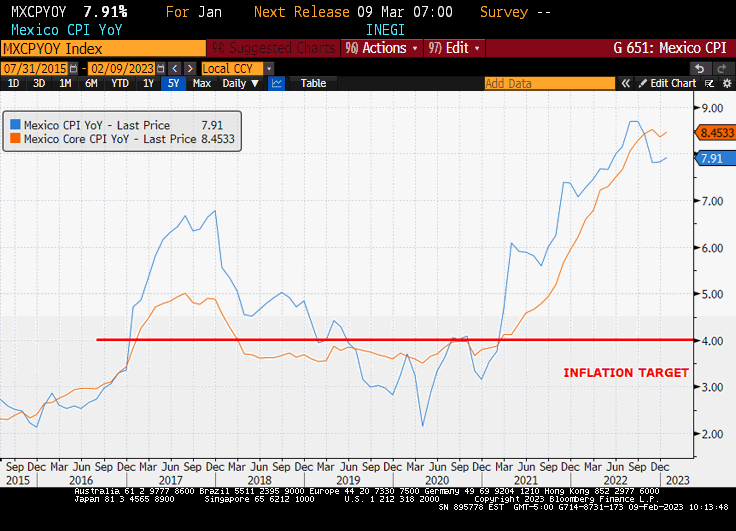Policy Tightening – Topping Up
09 February 2023
Read Time 2 MIN
Higher Peak Rates
Bank of Japan’s hawkish turn is an important element of the global policy chatter – given potential implications for Investment Grade bonds in developed markets (DM) and emerging markets (EM) – but Sweden’s central bank stole the monetary policy limelight this morning with a hawkish QT tweak (in addition to a 50bps rate hike). Sweden’s move resonates with a storyline that global central banks might tighten more and start easing later than currently priced in. The recent comments from the governor of the Colombian central bank are quite instructive in this regard. Governor Villar said that policy rates in the region should remain “relatively restrictive” for “an important amount of time” to bring inflation back to target and anchor expectations.
Inflation Pressures
One reason for caution is that - with food and energy prices normalizing – the remaining inflation pressures are increasingly considered a locally-driven phenomenon. This is the view, for example, of some board members of Mexico’s central bank, which is meeting later this afternoon (the consensus expects a 25bps rate hike following an upside inflation surprise – see chart below). The Peruvian central bank is also expected to extend the hiking cycle today (+25bps) – we would like to know how a bill on another round of private pension withdrawals fits into the equation, given its potential to boost domestic demand.
Policy Easing
The situation is not completely hopeless for doves – provided disinflation does not stall. For example, the Romanian central bank’s new assessment is that the disinflation rate might be faster than expected in H2-2023/H1-2024 (a side note – the Romanian central bank has been quite hawkish lately, so it is not Poland’s “perpetual doves” situation). Today’s move in the market expectations for Brazil’s policy rate (after a small downside inflation surprise) shows that successful disinflation creates a nice potential for rate cuts (especially when real rates are very high). However, Brazil’s policy space might be constrained by the new administration’s attacks on the central bank’s independence and attempts to change the inflation target. Stay tuned!
Chart at a Glance: Mexico’s Disinflation – A Bumpy Ride

Source: Bloomberg LP.
Related Insights
IMPORTANT DEFINITIONS & DISCLOSURES
This material may only be used outside of the United States.
This is not an offer to buy or sell, or a recommendation of any offer to buy or sell any of the securities mentioned herein. Fund holdings will vary. For a complete list of holdings in VanEck Mutual Funds and VanEck ETFs, please visit our website at www.vaneck.com.
The information presented does not involve the rendering of personalized investment, financial, legal, or tax advice. Certain statements contained herein may constitute projections, forecasts and other forward looking statements, which do not reflect actual results. Information provided by third-party sources are believed to be reliable and have not been independently verified for accuracy or completeness and cannot be guaranteed. Any opinions, projections, forecasts, and forward-looking statements presented herein are valid as of the date of this communication and are subject to change without notice. The information herein represents the opinion of the author(s), but not necessarily those of VanEck.
The views contained herein are not to be taken as advice or a recommendation to buy or sell any investment in any jurisdiction, nor is it a commitment from Van Eck Associates Corporation or its subsidiaries to participate in any transactions in any companies mentioned herein. This content is published in the United States. Investors are subject to securities and tax regulations within their applicable jurisdictions that are not addressed herein.
All investing is subject to risk, including the possible loss of the money you invest. As with any investment strategy, there is no guarantee that investment objectives will be met and investors may lose money. Diversification does not ensure a profit or protect against a loss in a declining market. Past performance is no guarantee of future results.
